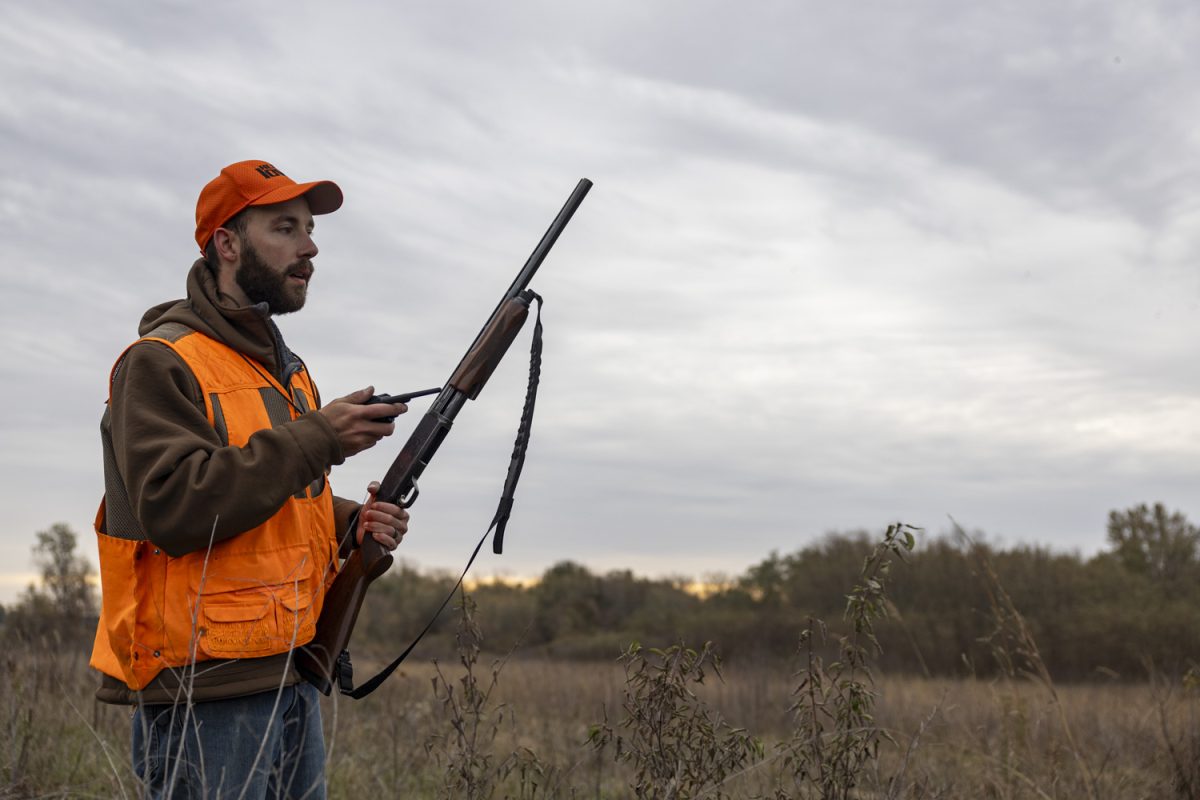Hunters from across the country are heading to Iowa for this year’s pheasant hunting season, which has seen the highest population of pheasants in the state since 2015.
The Iowa Department of Natural Resources reported in the Iowa August Roadside Survey that the number of pheasants present in the area was the highest it had ever been since 2015. The department collected this information by driving 218 30-mile routes along Iowa regions between Aug. 1-15.
The most populated areas with pheasants include the rural northeast and southwest regions of the state. In 2015, the average number of pheasants counted along these 30-mile routes was 23.2, which decreased until this year, averaging 22.5 in 2023.
According to AZ Animals, Iowa is No. 5 among the top 20 states that are best for pheasant hunting. The highest population of pheasants in Iowa was in 1963, with the average number of pheasants in the state being 78.7.
The Iowa DNR has since stepped in by identifying low-population pheasant areas and has undergone habitat management building within those areas to increase the pheasant population.
“Our [pheasant] population can sustain a much higher, we just don’t have hunters back yet,” Mick Klemesrud, an information specialist with the Iowa DNR, said. “We should be harvesting over 500,000 birds.”
PHOTOS: Small game, big numbers
Pheasant season is an economic boost for the rural regions of Iowa, whose communities cater to pheasant hunters from across the country, Klemesrud said.
In addition, certain small towns hold events like the annual “Tail and Spur” contest put on by the Neal Smith Wildlife Refuge in Prairie City, Iowa, which has a population of 1,708 people.
The contest judges thousands of hunters for the one who holds the pheasant with the longest tail — this year’s winner came in at 23 inches.
Female pheasants, referred to as hen pheasants, will move their chicks to the side of the road where the 218 routes are based, enabling Iowa DNR Enforcement and Wildlife Bureau personnel to count the female pheasants’ broods, which is the number of chicks within their nest.
Mild winters breed a growing population
From 2007 through 2012, Iowa was hit with a series of harsh winters. Because of the past winters from 2020 to the present, in which temperatures were mild, the pheasants were able to fight off exposure to cold and access food underneath ice more easily, increasing their numbers this year.
Pheasant diets typically include waste grain and other seeds available during the colder months. They also eat a variety of insects, worms, snails, or smaller animals of that caliber as they search for seeds.
Pheasants can be a difficult bird to hunt, considering their gold, brown, red, and black camouflaged feathers that blend into the prairie grounds around them. Female hen pheasants and male rooster pheasants have distinct differences in size and coloration.
Rooster pheasants are bigger than females and have green heads, red wattles with white beaks, and chestnut plumage, whilst hen pheasants are smaller, beige, with black spots all over.
Though they are capable, pheasants only take flight for short, low-to-the-ground periods.
“When you think about everything they’re enduring out there in the wild, they’re actually pretty darn Hardy animals,” Nick Martin, a hunter from Cedar Rapids, said.
There are more than 600,000 acres available to hunt on in Iowa. In Johnson County, the Hawkeye Wildlife Area in Swisher is one of the biggest, covering some of the most popular areas for pheasant hunting.
On a typical hunt, hunters are positioned in a straight line on the field about 20 yards apart to allow for the 45-degree angle zone of safe fire.
“We try to really encourage people to not just see the pheasant that you’re aiming at, but what’s in front of the pheasant or what’s behind the pheasant,” Klemesrud said.
Furry hunting friends
Some hunters are even accompanied by their dogs, who are trained to point pheasants out from yards away.
Aaron Ohlsen, a hunter in Johnson County, said he and his dog Boone — an English Setter whom he has trained since he was a puppy — often hunt for pheasants as a bonding activity.
“At the end of the day, it’s not about harvesting birds for me, it’s about just kind of having that bond with my dog and watching him work, and it’s pretty special,” Ohlsen said.
When it comes to hunting dogs, certain breeds specialize in certain things, such as spotting or tracking prey.
“The bird dogs and having pointing dogs are really kind of what sucked me in as I got older,” Martin said.
Martin’s 5-year-old Wirehaired Pointing Griffon dog named Sophie accompanies him on every hunt and has also been trained since she was a puppy. In January, Martin is expecting a new addition to his family — an English Setter puppy — as well as a newborn baby.
“So, the Wirehaired Pointing Griffon is a little slower, more methodical working dog,” Martin said. “It’s going to be a lot closer working compared to like a German Shorthaired Pointer.”
There are some regulations when it comes to pheasant hunting in the state of Iowa. Only male rooster pheasants can be shot, and only three can be taken home a day, with the total possession limit being 12 per season.
“The birds are out there, and people are excited to see them,” Klemesrud said. “For the bird business, it’s the prize, but the real trophy is being out there with your friends and your family and getting those memories and spending time together.”



